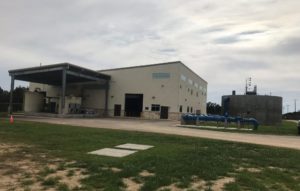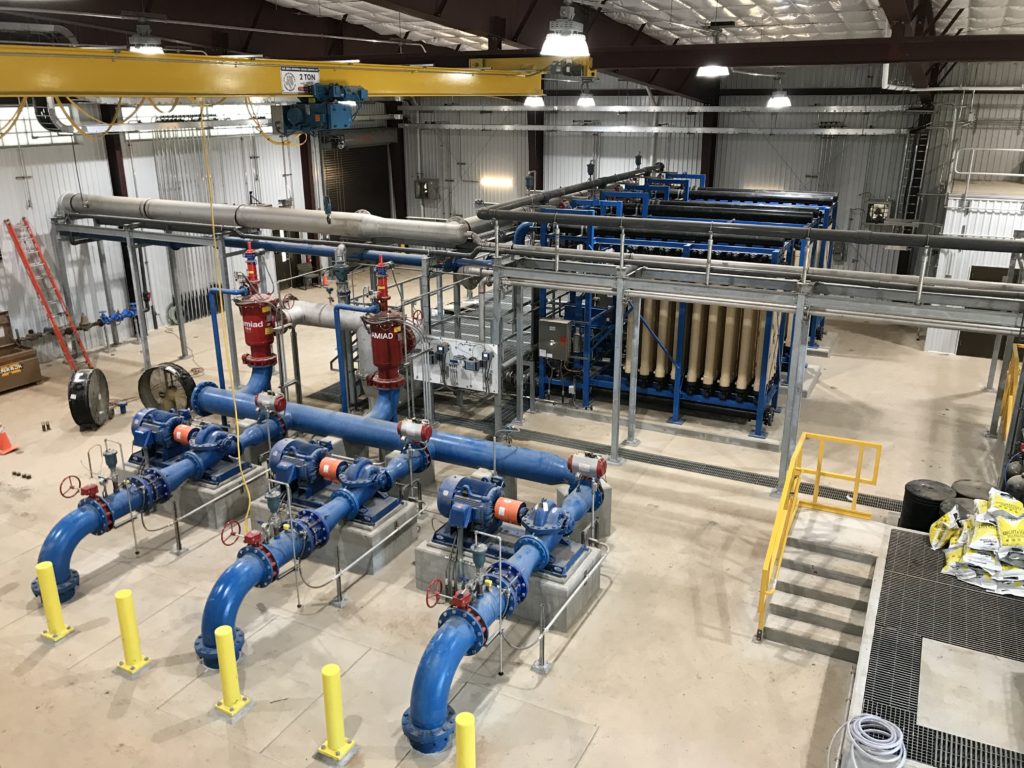Innovation: A Fast-Paced Solution to Clean New Braunfels’ Water
With its population and water needs growing quickly, New Braunfels had a plan to diversify its supply and meet demands projected to more than double over 20 years: A 3.74-MGD well field completed in 2015 would draw water from the Trinity Aquifer.
Early water quality tests showed that the water would only need standard disinfection before distribution. But later, the new wells produced discolored water that couldn’t be used immediately for drinking because it contained coliform bacteria and E. coli, along with excessive levels of aluminum and iron. Spikes in hydrogen sulfide and turbidity, the lack of transparency when water contains suspended particulates, suggested that surface water was contaminating the groundwater.
New Braunfels Utilities enlisted Freese and Nichols to find the cause and a solution. The result was a fast-paced project that used multiple innovative approaches that allowed for design, permitting and construction of a new treatment plant in half the time typically required. Management of the project included a Construction Manager at Risk method to expedite building treatment facilities while design was completed. The team also coordinated with the Texas Commission on Environmental Quality on permitting as a membrane treatment approach was piloted.
 Despite the unexpected complication in NBU’s water supply expansion, a combination of creative approaches made it possible to resolve treatment issues and meet the goal of quickly providing safe drinking water during high-demand summer months. The project also prepared NBU to keep pace with customers’ water needs as the population continues to grow.
Despite the unexpected complication in NBU’s water supply expansion, a combination of creative approaches made it possible to resolve treatment issues and meet the goal of quickly providing safe drinking water during high-demand summer months. The project also prepared NBU to keep pace with customers’ water needs as the population continues to grow.
Innovations extended across various aspects of the project, including:
- Water Quality Study to Determine Surface Water Influence
- Temporary Treatment System to Meet Peak Summer Demands
- Membrane Treatment Plant Site Visits to Incorporate Operator Experience into the Design
- Regulatory Coordination to Expedite the Project and Protect the Edwards Aquifer Recharge Zone
- Hydrogen Sulfide Treatment to Address Unusual Conditions
- Cartridge Filter Piloting to Determine the Most Cost-Effective Method
Sampling Plan
Freese and Nichols developed a complex sampling plan to confirm that the Trinity wells were influenced by surface water and to provide a more complete characterization of the raw water quality. Eight weeks of sampling showed that NBU would need a more intensive treatment approach than initially planned because the wells were designated by TCEQ as Groundwater Under the Influence of Surface Water (GUI).
Treatment Choice
After evaluating four options, including running a brief cartridge filter pilot, the project team determined that direct membrane filtration without settling would provide a reliable and economical water treatment solution. This system was the best fit based on suitability for solving the problem, life cycle cost and a relatively small footprint for the limited space available.
Plant components included: three microfiltration membrane racks, feed water pumps, automatic strainers, membrane backwash and clean-in-place systems, chlorine and coagulant systems, concrete feed water and backwash settling tanks, a prefabricated metal building with stucco and masonry exterior, and a new on-site lift station.
 While aeration is commonly used to treat hydrogen sulfide (H2S), it would be costly for the Trinity Well Field because of the water’s high alkalinity. Instead, the H2S was treated with chlorine, which would convert it to particulate elemental sulfur that could be removed by the membranes. The treatment system included a clarifier for recovery of water used to backwash the membranes, minimizing the waste stream leaving the plant and preventing overload of NBU’s wastewater infrastructure.
While aeration is commonly used to treat hydrogen sulfide (H2S), it would be costly for the Trinity Well Field because of the water’s high alkalinity. Instead, the H2S was treated with chlorine, which would convert it to particulate elemental sulfur that could be removed by the membranes. The treatment system included a clarifier for recovery of water used to backwash the membranes, minimizing the waste stream leaving the plant and preventing overload of NBU’s wastewater infrastructure.
Delivery Method
To reach a goal of getting the system ready in 18 months to meet summer 2018 water demands, a Construction Manager At Risk procurement process allowed for several project aspects to proceed at the same time. Meanwhile, the team used a competitive process to select a membrane equipment supplier. They adapted the design to the type of membrane selected and ran a membrane pilot for regulatory approval.
Regular meetings with the project team and NBU staff provided design feedback and value engineering ideas as the work progressed, which sped up the design schedule and kept the project on budget.
The team also maximized the use of practical information: At the beginning of final design, the Owner, CMAR and design engineers visited two existing membrane treatment plants to gather lessons learned from operators’ experiences and incorporate that feedback into the design of the new plant.
Permit Coordination
To avoid delays that might result during regulatory reviews, the project team met with all relevant regulatory entities at the beginning of design to clearly understand expectations. The team also developed a permitting log to keep track of document submittals and approvals. Because of the emergency nature of the project, TCEQ agreed to an accelerated permitting schedule. That allowed the team to submit design plans and specifications during the membrane pilot with the understanding that a rating wouldn’t be assigned until the results were reviewed.
Temporary Treatment System
The team also had to coordinate with TCEQ on permitting for a temporary solution to provide NBU customers with water during the high-demand summer months in 2017 while the new plant was being built: A trailer-mounted membrane system was designed and installed to supply up to 1.15 MGD of filtered water while the full-scale system was under design. The team completed design and obtained TCEQ approval for the temporary system in approximately five months. Because there was no wastewater infrastructure on-site when the temporary system was installed, the team included a plate settler for backwash recycling to minimize the cost of waste haul-off.